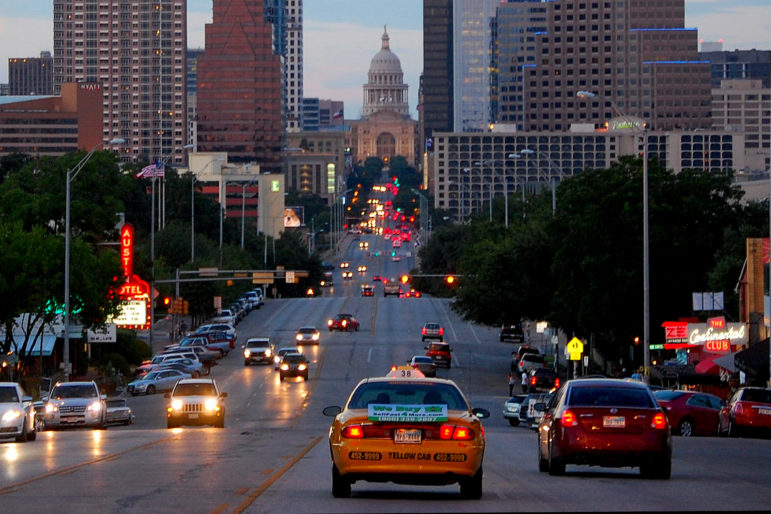
The U.S. Interagency Council on Homelessness, the Veterans Administration, HUD, governors and mayors, and countless others share the vision to end homelessness among veterans. In rallying the mayors to this effort, the first lady Michelle Obama framed the issue perfectly: “When a veteran comes home kissing the ground, it is unacceptable that he should ever have to sleep on it.”
Austin, Texas is the latest city to join two states and 28 other communities in achieving the goal of ending homelessness among veterans.
Using a variety of federal programs and some privately raised funds, the city has provided housing for 682 veterans since October 2014. The victory, though, comes with a caveat. The certification doesn’t mean that Austin will never have a homeless veteran. Instead, it means that the city has established a system to ensure there is sufficient housing for veterans and that future periods of homelessness are brief and rare.
The White House and VA announced the goal to end veteran homelessness in 2009. The policy was outlined in the strategic plan called Opening Doors. These criteria and benchmarks define the federal government’s objectives. A city or state is certified if it can demonstrate that it has ended chronic homelessness among veterans and that all veterans who need housing receive it within 90 days.
This first-of-a-kind initiative is improving conditions for homeless veterans across the country as many more communities strive to achieve this designation. The 2016 Point-in-Time (PIT) Count indicates that homelessness among veterans is down by nearly 50 percent since 2010 (a 17 percent decrease since 2015).
“Housing First,” permanent supportive housing, rapid re-housing, and marshaling all manner of resources are the primary tools deployed to end homelessness, described in detail here.
Sign up for our free newsletters
Subscribe to NPQ's newsletters to have our top stories delivered directly to your inbox.
By signing up, you agree to our privacy policy and terms of use, and to receive messages from NPQ and our partners.
“The folks in Austin should be proud that through community collaboration—the public sector, the private sector and the nonprofit sector—that so many more veterans have been housed than before,” said Housing and Urban Development Secretary Julian Castro, who will be joined by Austin Mayor Steve Adler for the announcement at City Hall. “Now that the community has shown how to do this on veteran homelessness, they should do the same for chronic homelessness.”
The two primary funding sources for this national initiative that includes the provision of all-important mental and physical health services are HUD housing vouchers and the Veterans Administration’s Supportive Housing program. For each community there are also many private contributors. Here is a list of corporate and philanthropic partners.
Austin, TX joins two states and 28 other communities to have achieved the goal of ending homelessness among veterans: Albany, NY; Bergen County, NJ; Connecticut (the first state to do so); Cumberland County/Fayetteville, NC; Des Moines, IA; Flagler County, FL; Hattiesburg, MS; Houston, TX; Lancaster City & County, Pap; Las Cruces, NM; Las Vegas, NV; Long Island, NY; Lynn, MA; Mississippi Gulf Coast Region; Mobile, AL; Montgomery County, MD; New; Orleans, LA; Philadelphia, PA; Reading/Berks County, PA; Rochester, NY; Rockford, IL; San Antonio, TX; Saratoga; Springs, NY; Schenectady, NY; Syracuse, NY; Terrebonne; Parish, LA; Troy, NY; Virginia; Volusia County/Daytona; Beach, FL; and Winston-Salem, NC.
NPQ has reported on this national initiative, such as the efforts in Los Angeles and San Francisco to join the communities listed above, and the role philanthropy is playing in Washington, D.C. While the complex challenge of making homelessness “rare and brief” for veterans is certainly daunting, these two states and 29 communities demonstrate what clear and bold visioning and partnerships can achieve.
The original vision was to end homelessness among veterans by 2015. That this may very well be a permanent work in progress does not diminish the worthiness of the goal. Solutions are expensive and elusive. The U.S. government also set goals of ending chronic homelessness by 2017 and ending homelessness for families with children and youth by 2020. According to the annual Point-in-Time Counts, there are almost 600,000 people who are homeless. More than 200,000 of them are families; about 50,000 of them are veterans. Here is HUD’s 2015 Annual Homeless Assessment Report (AHAR) to Congress.
Veterans become homeless most often because of war-related disabilities. Many veterans find readjusting to civilian life difficult. Ending homelessness among veterans is a grand opportunity for us to fight for our veterans and, in the process, demonstrate what can be accomplished when federal and local agencies and countless other public and private partners come together for a common cause.—James Schaffer













